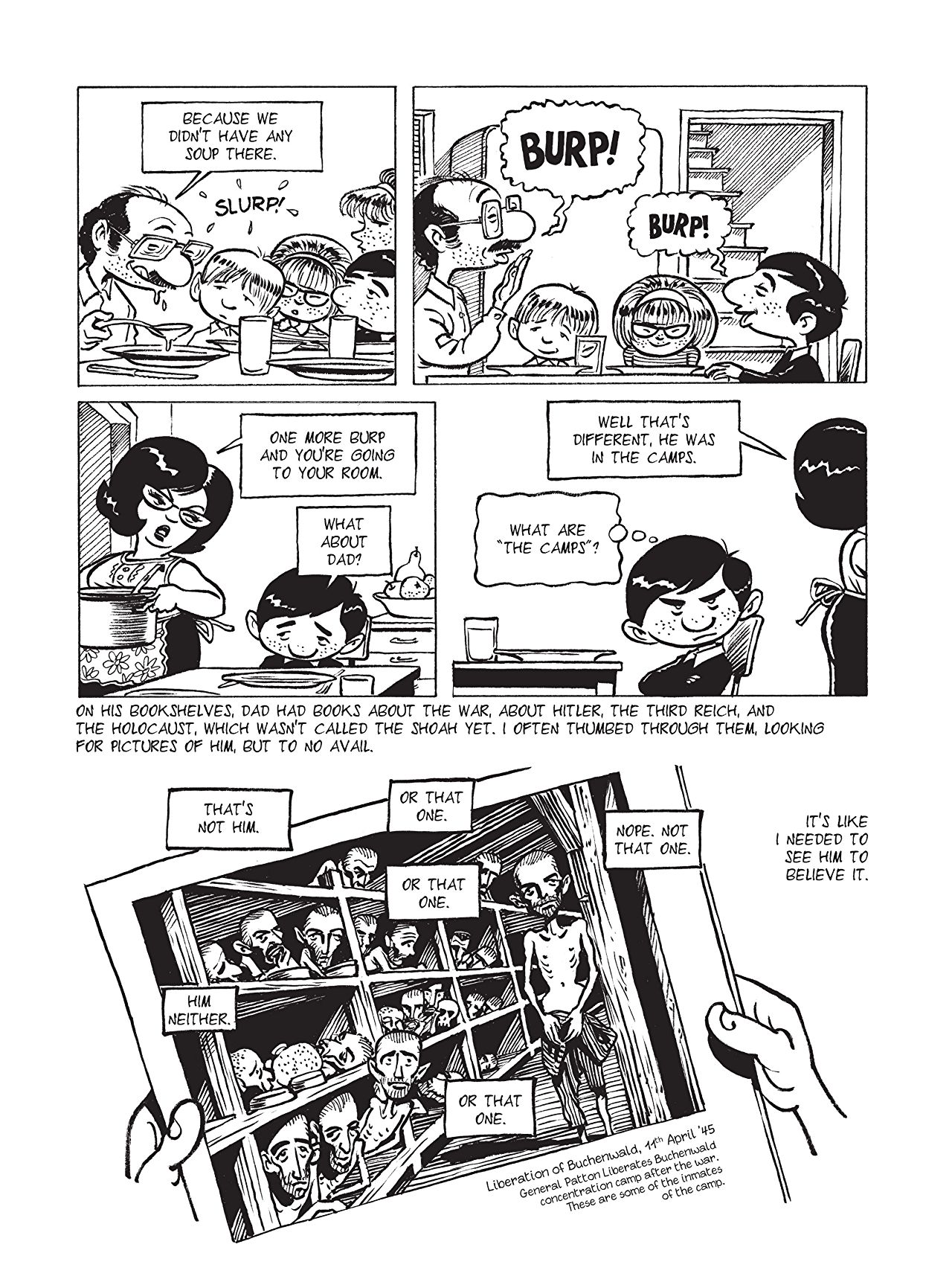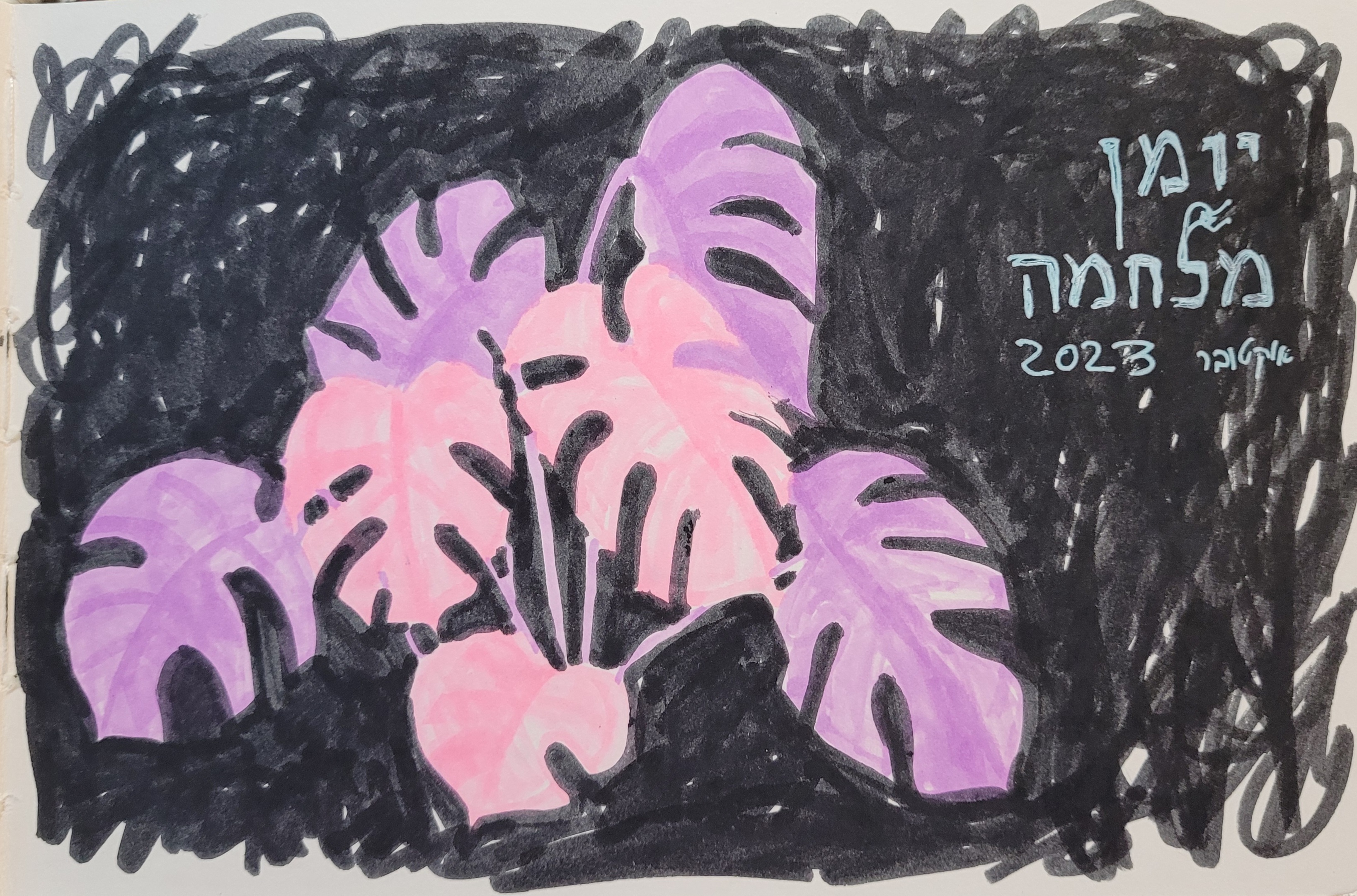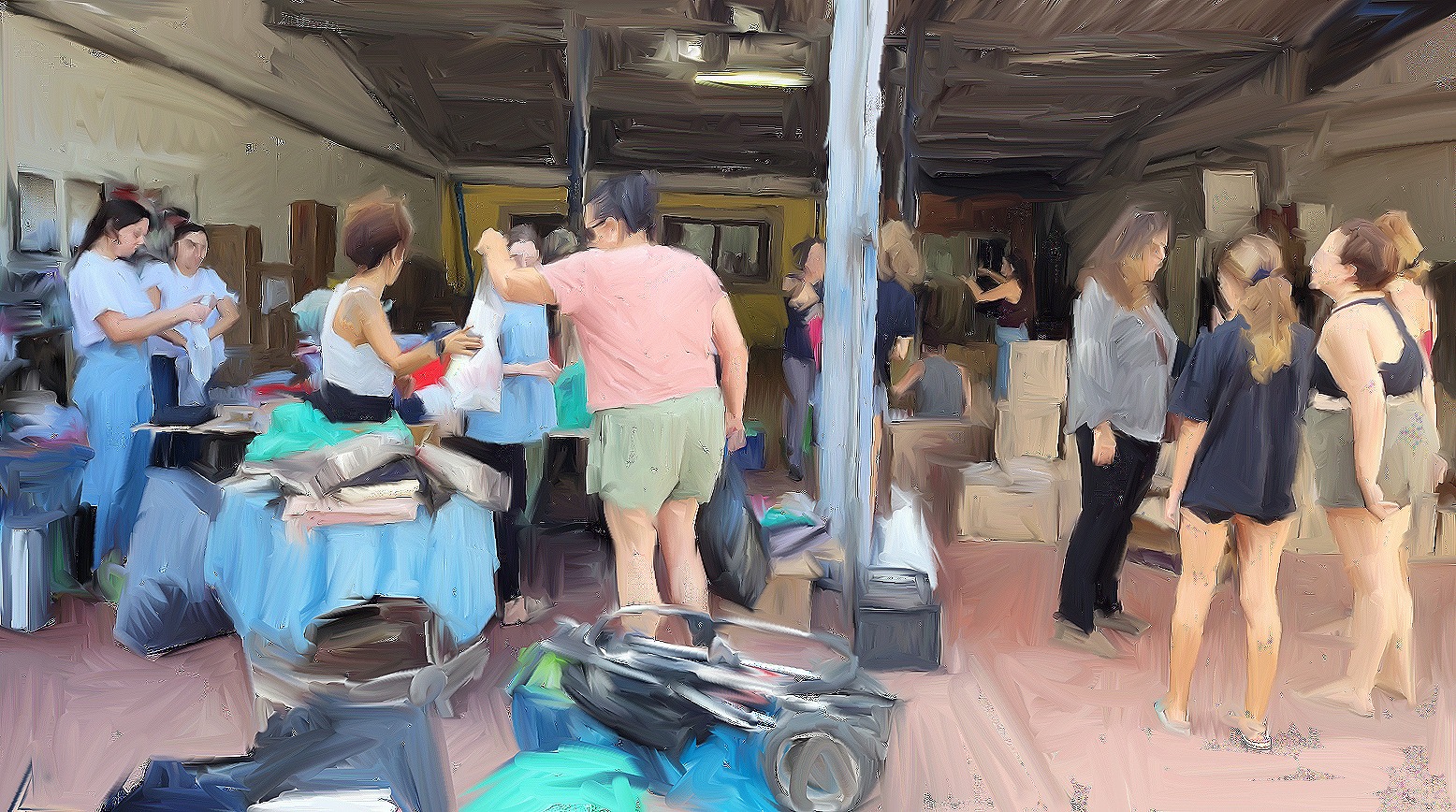- Home
- Art & Culture
- Shoah Graphic Novels
The Shoah in Three Graphic Novels
75 years for the liberation of Auschwitz
As the leaders of the world gathered in Jerusalem for the Fifth Holocaust Forum to commemorate 75 years to the liberation of Auschwitz, I went to my book shelf and finally sat down to read The Boxer – a graphic novel showing, telling (screaming) the story of Hertzko Haft in that death camp.
Perhaps because it’s so hard to talk about it, the horrors of the Shoah often find their way out of the survivors’ souls thru art.
Here are three graphic novels that tell the Shoah story in a more-or less chronological order:
Anne Frank's Diary The Graphic Adaptation, by Ari Folman and David Polonsky.
The Boxer The True Story of Hertzko Haft, by Reinhard Kleist.
Second Generation The things I didn't tell my father, by Michel Kichka.
Anne Frank tells her own story of hiding from the Nazis in occupied Holland. She wrote it as it happened, in her own words, in the form of letters to an imaginary friend.
Unlike most Shoah stories, the horrifying bleeding parts are absent for the simple reason that the diary ends before she gets caught.
The Boxer might as well pick up where she left. It is told as a firsthand personal account of a very young man who was sent to the camps and how he survived there. The second half of the book is about what his life was like after the war.
Hertzko’s story is framed by the memories his son, Allan, who is passing on to us what his father told him.
Allan Haft, Ari Folman (who adapted Anne Frank’s diary) and Michel Kichka, are all children of Holocaust survivors – what we call "Second Generation", which brings us to Michel’s book:
As you might expect, the people who came back from the Other Planet were never the same again. Their experiences, hopes and nightmares had a profound impact on their families and on everyone around them.
Kichka is showing us what that's like.
Take a deep breath. Our journey starts with a young girl:
The Diary of Anne Frank
In COLOR!
That was my first reaction, because World War Two in general and the Shoah especially, are etched in my mind in black and white.
Polonsky draws Anne with infinite compassion. There’s a softness to the drawings. The light and pleasant color palette is soothing and calming. Not at all what you'd expect.
This book feels like someone’s soul.
I do hope Anne Frank’s Diary needs no introduction. Her insight, humor and optimism reach into your heart effortlessly, as if you know her, like a close friend.
Anne is in Good Hands
Ari Folman and David Polonsky were approached by the Anne Frank Foundation to create an animated movie based on Anne’s diary, as well as a graphic novel. (The film is due in 2020.)
This was following the success of “Waltz With Bashir”, an animated feature film dealing with Folman's trauma of the Lebanon War. The film was nominated an Oscar for Best Foreign Language Film of 2009.
Folman, Polonsky, and Animation Director Yoni Goodman also made "The Congress", starring Robin Wright.
"The Congress” and “Bashir” deal with trauma, the subconscious, repressed memories and depression. They also explore fantastic elements and a search for closure and healing.
With all that under their belt, this team was more than capable of dealing with the materials of Anne’s psyche.
Drawing Anne’s Imagination
It’s very hard to imagine some else’s imagination, but the Anne Frank graphic novel does just that. In an interview, Folman explained:
“You can clearly see that it’s all happening inside Anne’s head. Softened fantasies, almost innocent, of the atrocity, with no gas chambers and without the death camps as they really were.
These are the visualizations of a young girl who, in her short life, only saw a film or read a book. We tried to bring her own private imagination to life.”
Then there are the things that graphic novels are made for – the "Show Don’t Tell" power of the medium:
Folman: “Anne could mention in four short sentences the fact that Herman Van Dan is an expert in making sausages.
We turned it into a party: a fun, vivid double-spread where we see him getting the meat and making the sausages at the Back House. Everything is colorful and full of life.
We were always thinking of what would be important for the language of a graphic novel.”
The World’s a Stage
All the characters in the book get a theatrical treatment, complete with entries and exits.
Perhaps it’s because the story is basically “A group of people stuck in a room” that the novel feels, to me, like a play on a stage.
I think Folman and Polonski did a brilliant job in conveying the feeling of a small space without falling into clichés.
The stifling confinement of the Back House is all set for exploding into the vastness of Anne’s mind:
When this happens, the black frames of the drawings vanish, leaving a white space of imagination:
The Challenges and Advantages of a New Adaptation
It would have been impossible to illustrate the entire diary, and so Folman and Polonski compressed the original text to fit the graphic form.
Still, they didn’t have the heart to give up some of the more brilliant parts of Anne’s writing and they left a few of the letters in their original full-text form.
The new adaptation also allowed the story to expand. When agreeing to make the animated feature, Folman had one condition – that the story will not end where the diary ends.
He insisted on telling us what happened to Anne and her family after they got caught. He insisted on showing us her death.
Some argue that the reason Anne Frank’s diary became such a canonical representation of the Shoah is because it is so soft and optimistic, so conspicuously lacking in gas chambers and skeletal bodies.
This made it easier to digest, they figure.
The adaptation also brings back materials that Anne’s father originally censored, those dealing with the sexuality and intimacy of a young teenager.
Teen sexuality is no longer taboo, and we can talk about it now. Anne talked about it 75 years ago! She was way ahead of her time.
There are two pages that Polonsky drew as a monument to Anne, and to what she might have been, had she lived.
He said that drawing her as an adult was emotionally the hardest drawing for him to make. It made him realize how much the world had missed out on a grown-up Anne Frank.
This book keeps her soul alive.
The next book takes us into the heart of darkness: The Boxer shows us straight into the Death Camps.
This does not necessarily make The Boxer the hardest book of the three to digest. All three of them are painful; all three have human spirit and hope.
This one is simply the middle of the timeline, the act of genocide itself. It’s a story of brutality and brutal survival, and, surprisingly, of the power of love.
The Boxer
Based on The real story of Hertzko (Harry) Haft, Challenger of Rocky Marciano
It's a punch in the gut, this book is.
All in black and white, the drawings are dark, violent, visceral and powerful.
Reinhard Kleist, renowned illustrator and storyteller, is no stranger to controversial biographies. He draws this story like a dark action movie.
It's fast paced and does not spare the readers. It's all there on the pages, drawn plainly and in your face: The cattle cars, the Zonder Commando. Death marches, skeletal prisoners in striped uniforms, numbers tattooed on arms, blood and teeth flying with every punch.
Hertzko Haft was 14 when the Nazis invaded Poland, and once he was caught in their net it seems like he deliberately went and checked off all the boxes of a Shoah story.
A resourceful and extremely resilient person, Hertzko survived by making himself useful to people who could help him.
These selfish saviors present themselves in the most unlikely ways.
He started out as a smuggler, graduated to thief, and then the story got a whole new twist when Hertzko was made to fight as a boxer for the entertainment of the Nazi officers.
The fights were to the death.
God Died in Auschwitz, But Love Didn't
Though not as self-reflective as Anne Frank, we do get a good hard look into Hertzko's state of mind.
He loses god. "There was no god anymore" he says in the cattle car.
Many holocaust survivors feel this way, for what god could possibly allow a place such as Auschwitz to exist?
Love, on the other hand, stays with him all along - his love for his fiancée, Leah.
The hope and the desperate attempts to find her again are what keeps him moving, well after the war ends.
Everything he does once he's free – going to America, becoming a professional boxer – it's all in the hope that it would help him find his love once again.
Allan Haft
The Boxer is a framed story. It begins and ends thru the eyes of Hertzko's son, Allan.
Herztko could barely read and write. It was Allan who wrote the book with his father's story that the graphic novel is based on.
Turns out, being the child of a holocaust survivor is a survival story all by itself. It's called being a "Second Generation to the Shoah":
Second Generation
The things I didn't tell my Father, By Michel Kichka
Here’s a question for you: What’s the first thing that comes to your mind when you see this picture?
My mom was sitting on the sofa one day, reading a magazine. She called me over, laid open a page with a picture just like that, and asked me this question.
I didn’t think much: “Auschwitz, Shoah”, I said.
It was just a random picture of a random train track in the middle of a lovely green forest but it immediately threw me back to this:
The trains and the cattle cars have become a symbol of the Shoah. They are set in my mind, iconized. I grew up with it. It's imprinted on me and it affects me, whether I think of it or not.
Now, I'm not Second Generation. I'm more like Third Generation Once Removed, but even though I didn't grow up with this in my own home, I most certainly have survivors in my family - blue tattooed numbers, mortal fear of trains and all.
My family is "bits and pieces", it's "what's left". Israelis, it's been suggested, are a nation in PTSD.
Kichka's book is so hard for me, I think, because I recognize just a bit too much of it in person.
The Child Who Sees Everything
Born in Belgium to a father who's an Auschwitz survivor, Michel grew up in a home where the Shoah was ever-present.
It was casual and as a matter of fact, like a remark about the soup at dinner: "Because we didn't have any soup there."
It was also the ultimate excuse for his father, for, well, everything.
A keen observer, young Kichka looks at the different characters in his life: his parents and family, friends, teachers, clients at the shop.
He tells us how it was to be a Jewish kid in boarding school, and about the things that seem normal when you're a child, simply because that's how it is.
Kichka's style is cartoony, funny. I know his work as "That Funny Guy".He also draws very political cartoons, and he usually doesn't bother with political correctness.
Unlike the other two novels, this one really is a first hand account. No mediators, no filters, and he really puts himself out there on the pages.
Don't be fooled by the cartoony style. This book is not "nice", and it's not for kids.
He always had questions: What happened there in the camps? But for all his brazen mentions of it, Kichka Senior never actually shared his story with his kids.
Then a terrible tragedy strikes. It becomes a breaking point for both father and son, a watershed moment.
Kichka's father becomes obsessed with telling and re-telling his survival story to the whole wide world.
Michel too, begins examining his own tragedy.
Michel finds he has a whole new load of hard questions, and that for all the compulsive Shoah-telling, his father is still incapable of just talking to him about it.
And that is what this book is.
It's the intimate, private and open conversation that Michel is finally having with his father, thru drawings and stories and time.
Soon, there will be no survivors left. The Second Generation is compelled to record these memories before they're gone.
The world leaders gathered in Jerusalem had one recurring theme in their excellent speeches: Remember.
We must.
A note about reading these books in Hebrew
I’m reading all three of these books in Hebrew, but none of them was originally written in it.
Anne Frank’s original diary is in Dutch.
Michel Kichka’s book is originally in French, even though he made Aliya long ago and lives and works in Israel.
The Boxer is based on Allan Haft’s book in English, but the artist Reinhard Kleist is German.
All three were translated to several languages, most notable Anne Frank, which you can find I think in every language on Earth.
The reason I’m troubling you with all these linguistic gymnastics is because I think it's a part of the bigger picture that these books show.
Holocaust survivors were scattered all over the world, and so are their stories.
Also, translating graphic novels into Hebrew presents a particular problem – the Right to Left problem.
As I read thru the pages, I’m occasionally aware that I’m seeing the mirror image of the original layout. Sometimes even a small bit of text will be left over in the translation, a flipped graphic.
Most of the time you don’t notice this. Until suddenly you do.
Follow Me on Instagram:
https://www.instagram.com/nettacanfi/
























